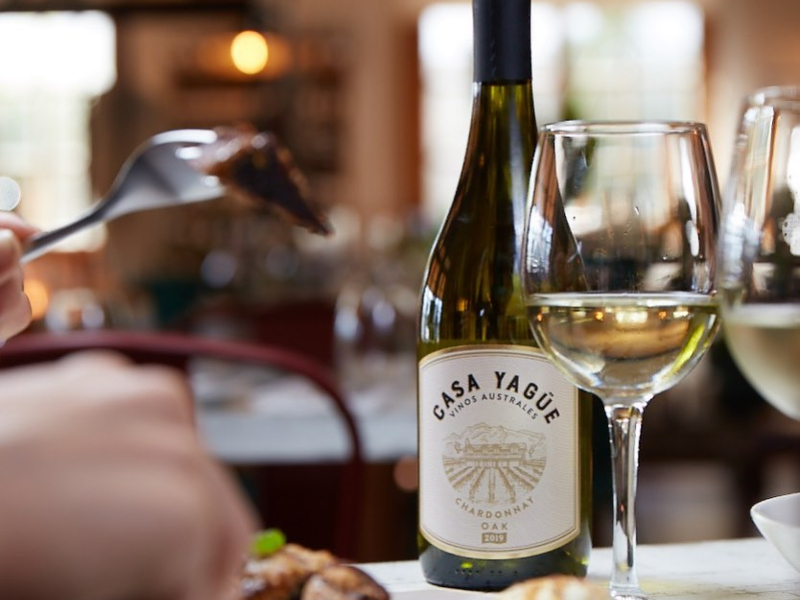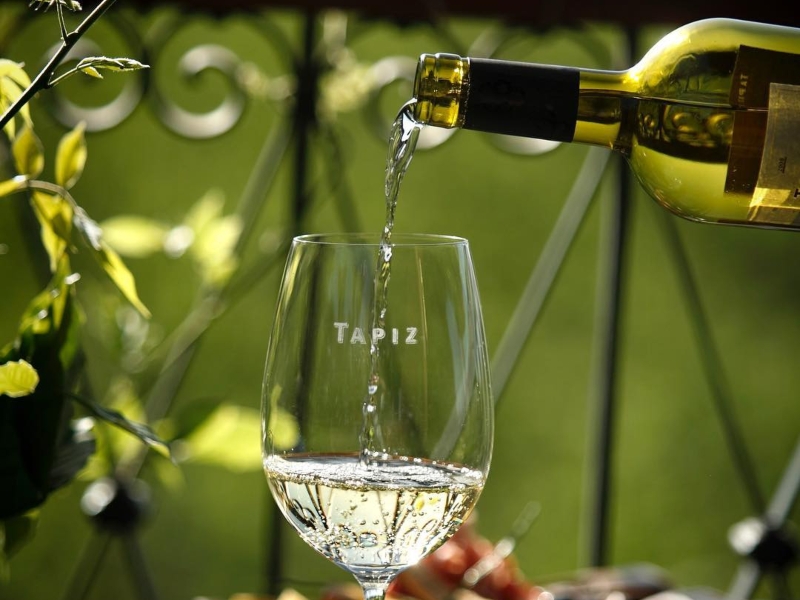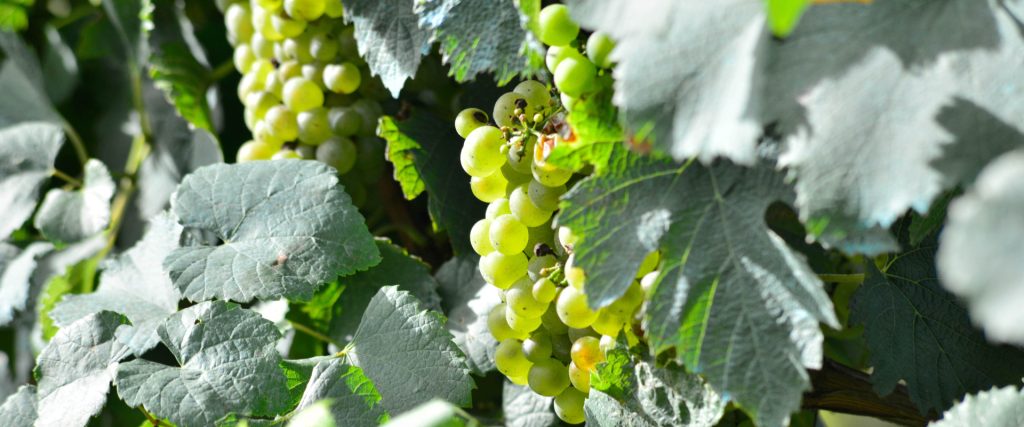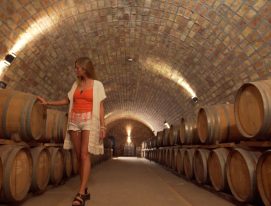We celebrate international Sauvignon Blanc day this week (on the first Friday of May), to draw attention to a variety that is increasingly turning heads in the world of whites. In Argentina, the move into cooler regions by winegrowers, oenologists and winery owners is resulting in white wines that impress with their freshness but also the personality lent them by the different terroirs from which they hail, ensuring that Argentine Sauvignon Blanc stands out from its peers from across the world.
International Sauvignon Blanc Day
“In recent years, a lot more attention has been paid to where vines are being planted, generally in cooler areas due to latitude or because of the altitude. In both cases the cool nights make for wines with plenty of natural acidity,” says Marcelo Yagüe, the owner of the Patagonian winery Casa Yagüe, which makes an Argentine Sauvignon Blanc in Trevelin, Chubut Province, at a southern latitude of 43°.

Argentine Sauvignon Blancs tend to be elegant and expressive, but most of all present excellent freshness. While some wineries are heading south to produce them, others are choosing to plant ever higher, as is true of one of the hot spots of Argentine Sauvignon Blanc: the Uco Valley in Mendoza, which is further south than traditional viticultural areas such as Luján de Cuyo, where vineyards can be as high as 5600 feet above sea level.
“In the Uco Valley, especially Gualtallary, we make whites with a mineral profile quite similar to those from the Loire Valley in France but at a more affordable price. These wines are quite distinct from the tropical profile of the best Sauvignon Blancs from New Zealand. In fact, we don’t think that profile will do well in Argentine conditions,” says Eugenia Luka at Finca Sophenia, a winery with vineyards in Gualtallary, Uco Valley.

The quality paradox
The rise in Argentine Sauvignon Blanc up the list of consumer favorites is quite paradoxical, and applies to Argentine whites as a whole: the fewer hectares there are planted with white varieties, the greater the quality and the more interest there is in international markets.
“In Argentina, Sauvignon Blanc has expanded greatly over the last 10 to 12 years because today we’re producing wines with excellent character, so much so that we’re now daring to compete with far more renowned versions overseas. I think that Argentine Sauvignon Blanc is evolving, and young people are discovering it. It’s earning a place for itself among more traditional whites,” says Fabián Valenzuela, the oenologist at the wineries Wapisa and Tapiz.
As an indication, the latest report on the variety prepared by the Argentine National Institute of Vitivulture (INV) says that Argentine Sauvignon Blanc is the fourth-most exported white after Chardonnay, Torrontés Riojano and Pinot Gris. Today, the main destinations are the United States and the United Kingdom, followed by the Netherlands, Brazil and Mexico.

“For decades, Argentine white wine hasn’t been given the attention it deserves,” says Marcelo Yagüe at Casa Yagüe. “But I think that in recent years that has changed and we’re beginning to see Argentine Sauvignon Blancs with plenty of presence and character, examples that can match the great Sauvignon Blancs of the world.”
So what profiles does Argentine Sauvignon Blanc have to offer today? “If I had to differentiate them in some way, I’d separate them into classic and disruptive,” says Miriam Gómez, Head of Production and Oenology at the Mendoza winery Bodega Antigal. “The classics always have structure, volume and the traditionally raw character, but then we have Sauvignon Blancs that are much fresher and thirst-quenching. We’re even seeing unfiltered Sauvignon Blancs and other non-traditional versions. But in every case, it’s a variety that maintains its unique, inimitable character; what gives it its identity.
“Of course, we won’t find the vegetable, pea or asparagus character you get in Chile, or the voluptuousness of the French, or the lightness of the New Zealanders. We’re looking for a properly Argentine Sauvignon Blanc with a make-up that people can associate with the country.”
Terroir and modern winemaking methods
With 1830 hectares under vine with the variety running from north to south across 16 Argentine provinces (with the most by far found in Mendoza, which accounts for 76%), Sauvignon Blanc presents a range of profiles that reflect the very different terroirs where it is grown.
“Sauvignon Blanc has reached very high regions such as Las Carreras in Tupungato; and it has gone very low, like the Chapadmalal coast in the Province of Buenos Aires; it’s also headed north and south and oenologists are always looking at new techniques to being out the distinctive character of each of these places,” says Miriam Gómez.

In recent years, some regions have begun to stand out: there’s the aforementioned Uco Valley but also several emerging regions, many of them in Patagonia. This is true, for instance, of Trevelin, in Chubut, which has been granted its own Geographic Indication.
“The freshness that a lot of producers, winegrowers and oenologists are looking to achieve through high altitude, here occurs naturally due to the latitude,” says Marcelo Yagüe. “The cold climate, with frosts and cool nights all year round result in highly concentrated aromas and flavors. The characteristic you’ll find in wines from Trevelin is the low alcohol content (11.5 to 12.5% at the most), with very balanced acidity, floral aromas and plenty of the fruitiness you get in cool areas. They’re very subtle, pleasant wines, quite distinct from pea or asparagus flavors.”
Argentine Sauvignon Blanc is also a feature of the boom in Atlantic wines. Although Argentine viticulture has generally been associated with the deserts of the Andean foothills, some wineries are getting excellent results from land close to the Atlantic Ocean. This the case with Bodega Wapisa, whose Los Acantilados vineyard in the Province of Río Negro is just 18 miles from the Atlantic Coast.
“Our vineyards are located in Patagonia, very close to the Atlantic Ocean. It is the proximity to the sea that lends the wines such complex aromas and flavors,” says the oenologist at Wapisa, Javier Valenzuela.
“We harvest at different ripening points. The grapes harvested early offer more vegetable/herbal flavors (notes of jalapeño, green pepper, asparagus, grass and tarragon), and those picked later present riper aromas (citrous notes such as grapefruit) and those brought in later still present aromas of passion fruit. It’s a wide range that we then blend together to produce intense, complex wines.”
To sum up, as Miriam Gómez at Antigal says, “In recent years we have improved our knowledge of how best to handle the variety by taking the risk of planting in less traditional areas and studying how it develops in different conditions, accompanied by better methods in the winery, which allow Sauvignon Blanc to express itself better and have a closer relationship with its place of origin.”



